In this interview, Indigenous writer-director-cinematographer Warwick Thornton discusses The New Boy, his western about an Indigenous boy in 1940s Australia.
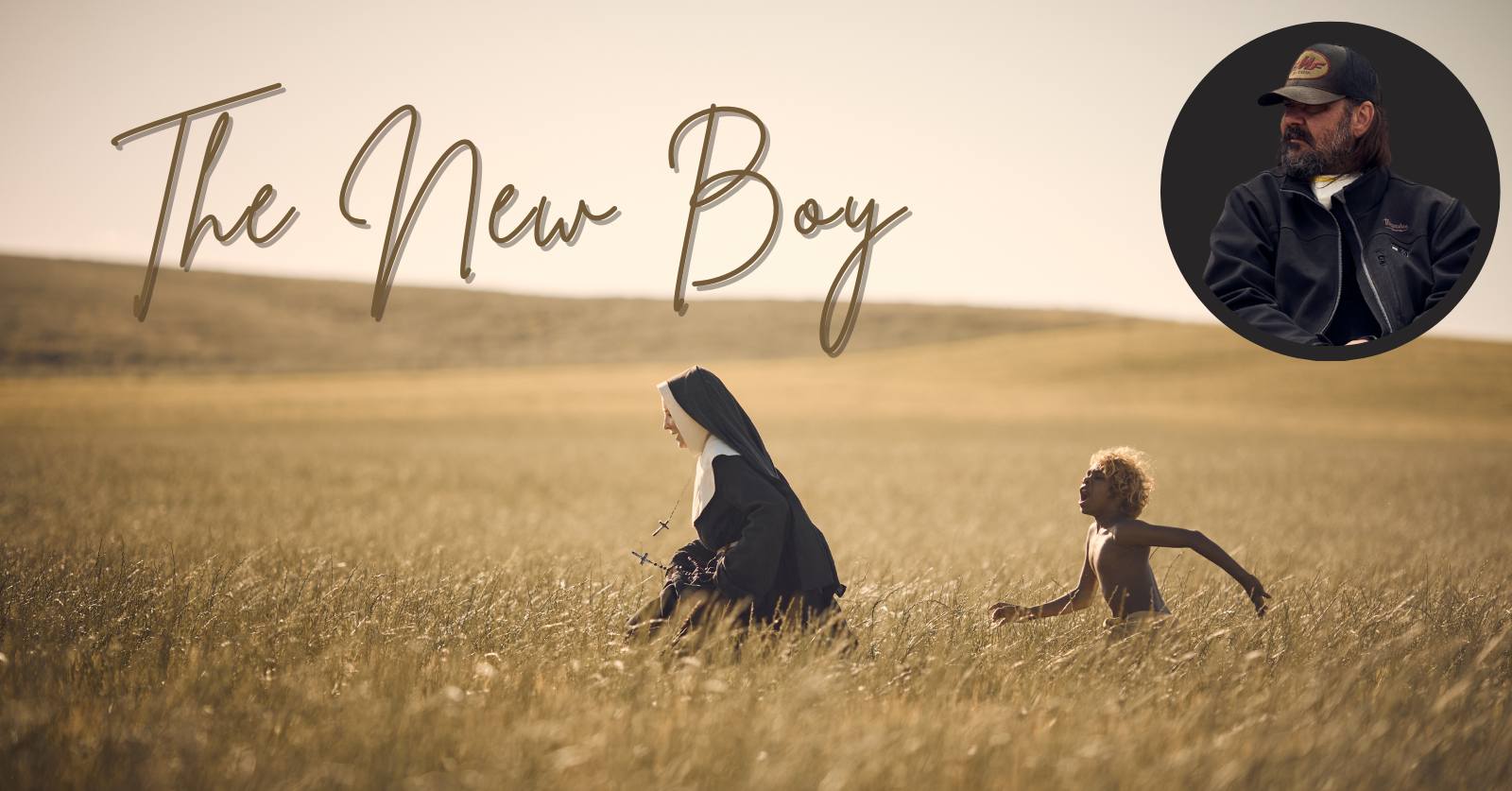
Discover another amazing film from an Indigenous Australian filmmaker
Discover one film you didn’t know you needed:
Not in the zeitgeist. Not pushed by streamers.
But still easy to find — and worth sitting with.
And a guide to help you do just that.
“I’m making this for the cinema screen,” writer-director-cinematographer Warwick Thornton told me of his new film, The New Boy. Think of it as an Indigenous Australian western: it opens, an Indigenous boy in a vast desert landscape gets trapped and kidnapped by settlers: thrown into a bag, and transported to a mission very far from his Country.
It’s in the middle of WWII, a time when many Indigenous children (anywhere from 1 in 10 to 1 in 3 Indigenous children), known as the Stolen Generations, were forcibly removed from their families by the Australian government and sent to usually religious institutions to be forcibly assimilated. Most of these institutions were not dissimilar to Canada’s Residential Schools — more sites of torture, humiliation, and colonial re-education than places of learning.
The New Boy (Aswan Reid) encounters something a little different: a sanctuary of a Christian monastery secretly run by a nun, Sister Eileen (Cate Blanchett), a warm and loving presence. Helped by an Indigenous nun, whom the boys lovingly call Sister Mum (Deborah Mailman), and an Indigenous farmhand, George (Wayne Blair), it’s as close to a home away from home as you could imagine.
But colonialism is still colonialism, even if it wears a kind face
But colonialism is still colonialism, even if it wears a kind face. Being removed from his Country, his family, his language, and his culture is traumatic enough for The New Boy. Sister Eileen truly believes that assimilating the boys into Christianity is the best thing for them, and that, as Thornton put it, “makes her dangerous.”
When The New Boy arrives, he has a kind of magic. Hiding underneath his dormitory bed in search of an enclosed space, he pulls out an orb of light from his pocket. Later, we learn it has healing powers and is not just a sort of security blanket. It’s the film’s best special effect — all done in camera. As Thornton put it, “I don’t buy lens flares; I make them”. As The New Boy acclimates to life at the monastery — lending a hand on the farm, playing by the stream, listening to the radio at the dinner table, wondering at the giant sculpture of Jesus on the cross — it’s only a matter of time before he loses a part of himself.
Warwick Thornton on The New Boy: “We haven’t had the truth-telling yet”
“We haven’t had the truth-telling yet,” Thornton told me when we spoke about his film The New Boy (2023). “As Indigenous storytellers — whether you’re a sculptor, a musician writing lyrics, a filmmaker, or a novelist — we still haven’t really gotten to tell our version. The past is where a lot of Indigenous storytellers are at the moment. We need to clean that up and tell our version before we can move forward. That’s a generational trauma that’s happened to Indigenous people.”
A few months after The New Boy premiered at Cannes, Australia held the 2023 Australian Indigenous Voice referendum to alter the Australian Constitution to recognize Indigenous Australians and give them a voice in parliament. It was rejected. While Canada is still leagues behind the goals set out in its 2015 Truth & Reconciliation Commission Final Report, that process has yet to begin on the national level in Australia. In the 2020s, the truth-telling process began in some states and territories.
The long road to Warwick Thornton’s The New Boy
The road to The New Boy has been a long one for Thornton. It’s his fourth narrative feature as a writer-director. His first feature, Samson and Delilah, won him the Caméra d’Or at Cannes in 2009. His previous feature, Sweet Country (2017), was one of the best films of the 2010s. I was fortunate to interview him about it back then. Since then, he has directed and DPed in TV (Mystery Road, The Beach, Firebite), and even before he started directing, he worked as a cinematographer for other directors.
Thornton wrote the first treatment of The New Boy before he made Samson and Delilah. But it wasn’t until a couple of decades of life had happened, and Cate Blanchett came aboard, that he figured out what that film was really about. Since its premiere in the Un Certain Regard section at Cannes in 2023, The New Boy has continued to evolve.
The different versions of Warwick Thornton’s The New Boy
I saw the Cannes cut of the film in 2023 at TIFF, which was 1h56 minutes long. The extra run time allowed more space for the echoes of Sister Eileen’s predecessor, the cruel priest Don Peter. We saw how the boys were still coping with the trauma of Don Peter’s violence and learned more about Sister Eileen’s backstory. However, the film was a little unwieldy toward the end and didn’t quite pack the emotional gut punch it now does, at just 1h36.
After watching the film with audiences around the world, Thornton decided to revisit the film and trim it. I miss some of the shading of the supporting characters in the more extended version, which offers more context for the experiences of the Stolen Generations. But the shorter version keeps the focus on The New Boy, and it’s sharper for it. (As a curiosity, you can watch the slightly trimmed 1h51 Australian cut on SBS Movies.)
An interview with Warwick Thornton on The New Boy
Speaking to Thornton via Zoom, we talked about the long process of bringing The New Boy to the screen. He discussed the virtues of shooting with just one camera, how he created The New Boy’s magical orb of light (the VFX aren’t what you might think), the process of choosing and designing the film’s locations, as well as developing the sound design. We concluded our discussion with a reflection on why his heart will always be tied to the cinematic experience, despite the fact that a great deal of excellent work (including his own, I might add) is also happening on television.
The New Boy is now on VOD in Canada, the United States, and the United Kingdom.
Seventh Row (7R): Can you tell me about the evolution of The New Boy? I know that you first started thinking about it 18 years ago, and it has undergone significant changes since then. And then, of course, you recut the film after its festival run in 2023.
Warwick Thornton: It’s been a bit of a conundrum. The original script was a good idea, but it was a bad script. I had to evolve myself, not just as a filmmaker, but maybe more as a person. What I really wanted to talk about was the clash of Indigenous people with Catholicism and Christianity. Christianity doesn’t like anybody else. If you’re not a Christian, you’ll burn in hell, and that’s the way it will always be.
It just took me longer to live, love, cry some more — that sort of journey that you take as a human being, to actually go, I know what this is about now.
I wrote the script 18 years ago, and then it just sort of sat around. I didn’t know what to do with it. I was talking to Cate — she was in London, I was in Australia, and it was during COVID. We couldn’t move anywhere. We just kept talking over bottles of wine. I found out what the film was about by talking to her about it.
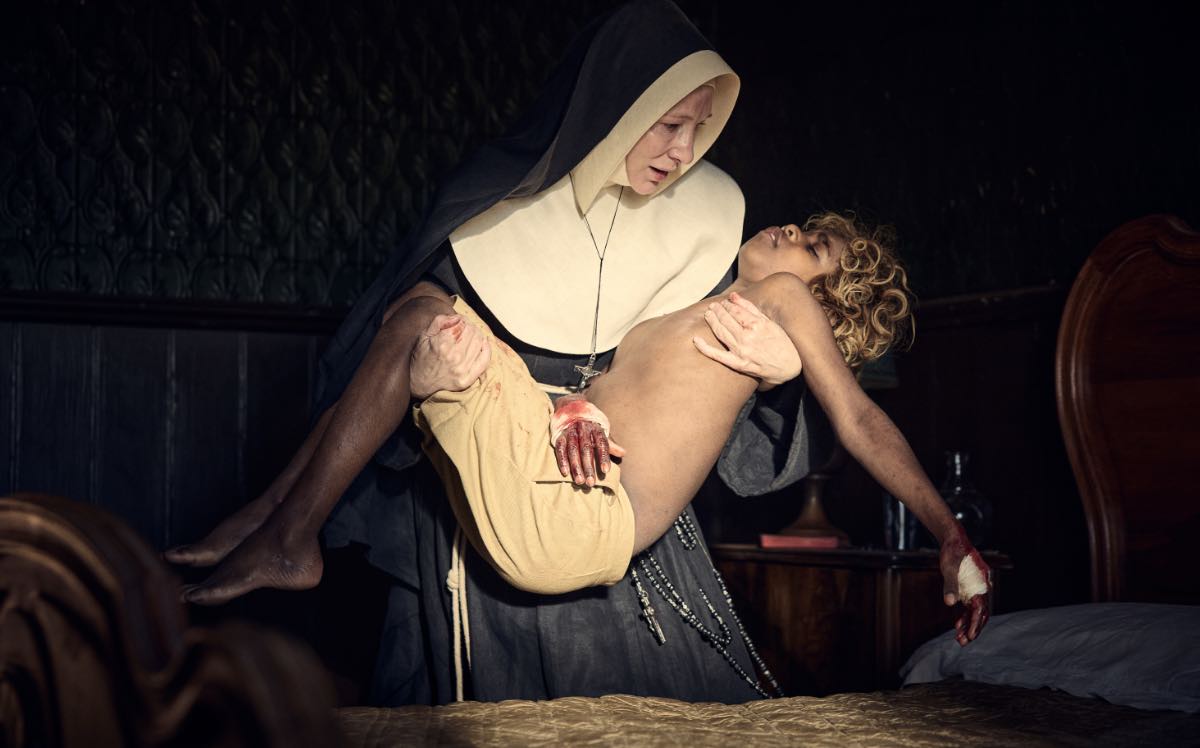
Changing a priest to a nun unlocked The New Boy for Warwick Thornton
It used to be about a priest [instead of a nun]. The problem with the priest was the concept of a priest and a boy. Obviously, the church has a lot of problems with priests and boys. And the film was never about that aspect. If you had seen a poster, you’d kind of go, “Oh, I don’t really want to watch that.” You’d make your own decisions about what the film would be about.
It was actually Andrew [Upton], Cate Blanchett’s husband, who said, “Just turn it into a nun.” And it was that simple. I quickly rewrote it, literally changing the name ‘Don Peter’ to ‘Sister Eileen’ on the computer and seeing what happened. The film really did bloom.
Cate originally was just going to be a producer of the film. And then I said, “Can you act in it, as well?” She was like, “Yeah, okay, I’ll do that.”
7R: The final writing process happens in the editing room. I saw the longer cut of The New Boy at TIFF in 2023 (1h56), which also screened at Cannes. Now there are two shorter versions. In Australia, it’s 1h51. The version released in Canada, the U.S., and the U.K. is 1h36.
Warwick Thornton: Editing is like writing the script. That script-to-screen process is such a dangerous place. You’ve got a great script. Then, you shoot it, and you don’t have a script anymore. You’ve got what you’ve shot.
It went to Cannes and all over the world. I watched it in so many countries with so many different audiences. It’s indulgent, but it’s actually great. You go, “This scene seems irrelevant. It’s boring.” Or “I want more of that scene. We should draw out the emotion of that scene.”
It’s shorter now. I don’t know if it’s a Director’s Cut. It’s very strange to make a director’s cut that’s shorter rather than longer.
I watched it with so many audiences around the world, and you’re feeling their reactions, their vibes, the energy in the room. You could feel where you were starting to lose the audience. And you go, “Well, this is the point where I’m losing them. I need to get rid of something in here and get back to the plot, back to the arc of the child or the nun.”
Recutting it was fantastic. And thankfully, Kath Shelper, the producer, let me. It was also kind of recut for North America. I don’t want to insult anybody, but the attention span is a little bit shorter.
7R: Would you say that you want people to watch the shorter one, the longer one, or both?
Warwick Thornton: I cut the shorter one just as much for myself as for North America. My attention span became a little bit shorter, as well, after seeing it so many times. So I did it for me. It’s my edit, you know? I’m happy for anybody to watch the shorter version.
7R: The film is about the Stolen Generations. It kind of gives a best-case scenario for what it might look like for an Indigenous child to be kidnapped and put into a mission. But colonialism is still colonialism!
Warwick Thornton: It’s naivety. That’s sort of what Christianity is, as well. It’s such a dangerous thing to be that naive. The landscape has been colonized: it used to be all forest. All the trees were cut down. This invasive plant that feeds the world, called wheat and barley, was put in, which is a version of colonization. Christianity is a colonizer because it’s trying to erase other cultures, their song and dance, and all that sort of stuff. There are multiple layers of that.
Obviously, Sister Eileen thinks she’s doing the right thing. She is kind, and she’s a great mom, but she’s just as dangerous as the ones who were beating the boys, the nasty ones. She’s totally naive, which is very dangerous. She believes they all need to be Christians, right? What you see in the film is the extinction of a special, beautiful power. It happens in the blink of an eye, literally in a monastery. That’s horrific, but she still believes she did the right thing.
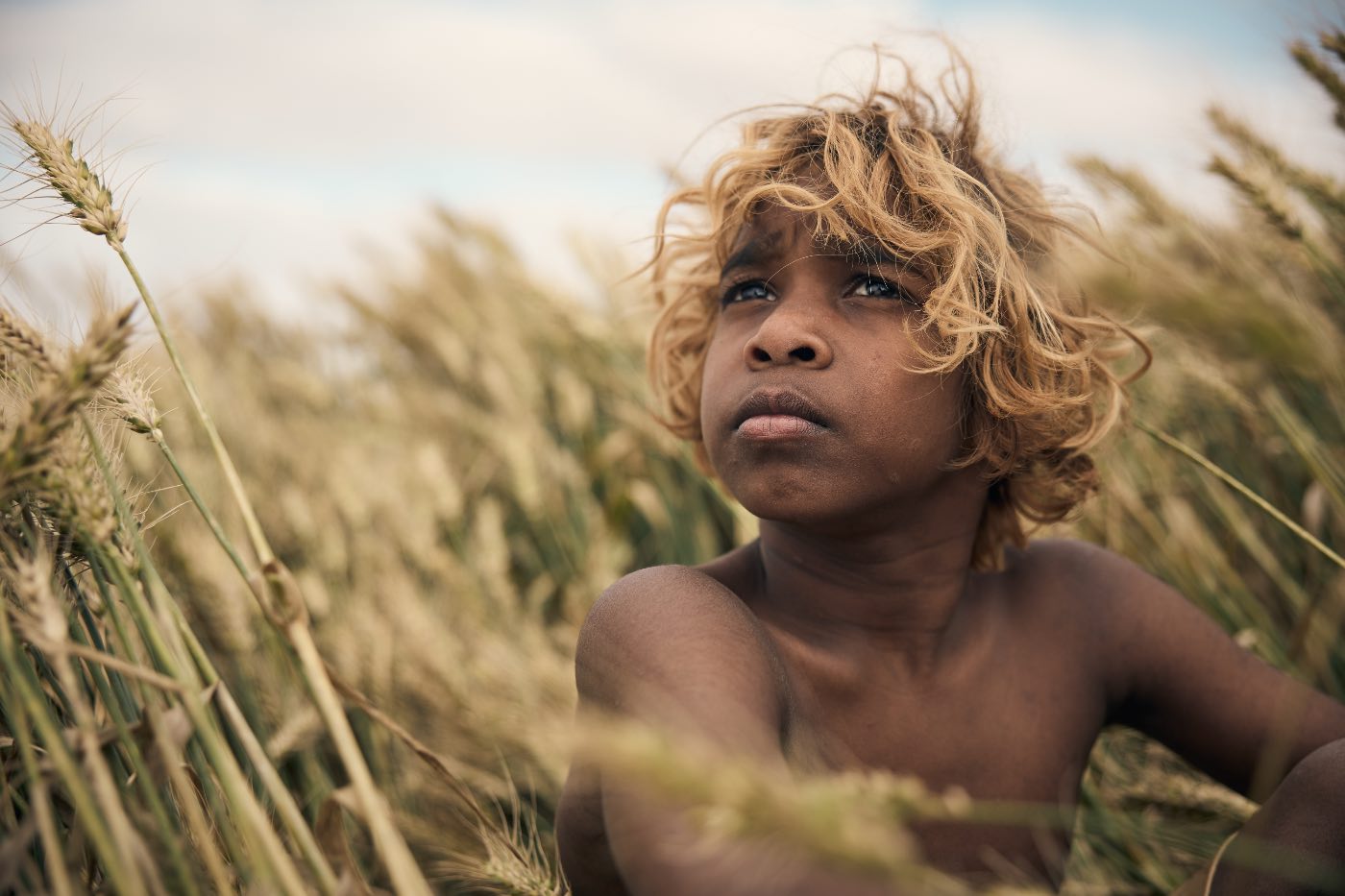
7R: You’ve made a couple of films now set in the past that tell a part of Indigenous history that has mostly only been told by settlers. I’m curious about what made you want to address this part of history?
Warwick Thornton: We haven’t had the truth-telling yet. As Indigenous storytellers — whether you’re a sculptor, a musician writing lyrics, a filmmaker, or a novelist — we still haven’t really gotten to tell our version.
The past is where a lot of Indigenous storytellers are at the moment. We need to clean that up and tell our version before we can move forward. That’s a generational trauma that’s happened to Indigenous people.
We can tell stories about the present or the future. But we need to teach the world about the past before people can understand where we are right now.
I grew up watching Westerns. That’s my favourite genre. The New Boy is a Western in a way. He’s put into a foreign landscape. It’s not the Badlands. It’s a different world to him.
For some reason, I make films with children and animals, which is what you’re supposed to never do as a director. I’m doing a Western at the moment. I’ll be on set in about half an hour. It’s a film called Wolfram, set in the 1920s and will come out next year. It’s the sequel to Sweet Country. It’s full of children and animals.
7R: Oh, that’s amazing. I love Sweet Country!! I saw in the press notes that when you were making The New Boy, you wanted to shoot on one camera with three lenses.
Warwick Thornton: The film I’m doing right now is three cameras with 20 lenses. I’ve only got two days left to shoot. We’ve been shooting for 23 days now, and I’ve got two days left. When you do two setups of the scene with two cameras, one’s always not in the right place. One has to compromise on the angle or the shot, because the other one needs to get a decent shot, as well. And you just start praying, you know what I mean?
You kind of walk away from finishing a scene, going, “We’ve done it with two cameras, and we did two or three setups. There must be something there that I can cut,” which is a terrible way to end the scene. “There must be something there!” I’m a bit more accomplished than that.
The precision of shooting with one camera
Whereas if you shoot with one camera, it’s in exactly the right place. You become a lot more methodical with performance and the angle of the cameras. It takes a little bit longer. But you walk away going, “I got it. I got exactly what I wanted. I got exactly what the script has asked me to put on the screen.”
With one camera, I feel much more confident about what I’ve shot. So I love one camera. In a strange way, you work quicker with one camera. It is not an intelligent thing to do when you’ve got children who’ve never been in a film before, or animals that have not been trained. It’s not a good idea because continuity goes out the window. Things keep changing. Whereas if you have two cameras, you can cope. You only need one to do the scene once, and you’ve got two angles already. So, it’s not an intelligent thing to do, but cinematically, I think it works better with a single camera.
7R: You are the cinematographer on your own films. Are you already thinking about what the film will look like when you’re writing?
Warwick Thornton: Absolutely. I’m an incredibly sparse writer. I don’t talk about the light when I write. The closest I get to writing about the light is the sunrises. It’s all in my head. I don’t have to explain that the sun bursts through the clouds and sprays golden light…the hue of the door and the purples…
I don’t write any of that rubbish. I’m not getting paid by the word. I’m not trying to entice a visual reference into anything, because it’s all in my mind. I know that’s going to happen. I know that’s already going to be there. So I don’t write it. It’s very sparse, which can make it a bit difficult for others to read. But that’s alright. They can just ask me questions, and I’ll tell them.
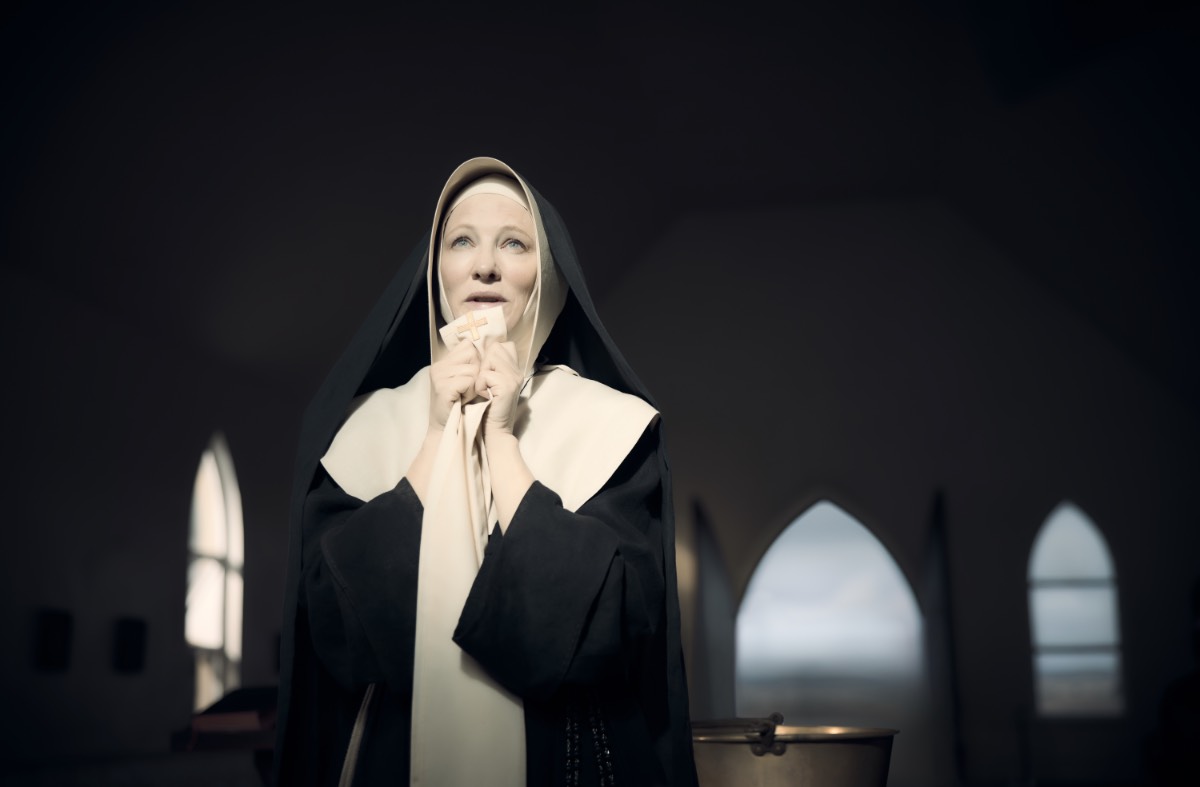
7R: What were your initial thoughts about what you wanted The New Boy to look like?
Warwick Thornton: People need you to explain that image so that they can put it in a box and label it. You know what I mean? What is it like? What genre? People need to understand. I would always say to people, “It’s going to look like Days of Heaven,” which is one of the most excessive films ever made, where you’re only shooting at magic hour. And people go, “Oh, okay.” That would give them a visual reference to the film, and then they could grab that, put it in a box, tie a bow around it, and label, you know, “The New Boy looks like Days of Heaven.” The irony is that I’ve never seen Days of Heaven. I’ve seen the trailer. So that helped people as a sort of visual reference. That’s how I sold it.
Amy Baker was the designer. She’s an amazing designer. We talked about Caravaggio and the early Italian masters: all the arches and that sort of painting with light. I asked the designer to include numerous arches so that I could incorporate frames within frames and reference biblical imagery. Obviously, there are natural arches in nature, but they’re very rare. The arch is part of colonization: the window and the arch.
7R: Can you tell me about the locations where you shot in and how you wanted to capture them?
Warwick Thornton: The place where we shot is a town called Burra, which is about two hours out of Adelaide. It is Days of Heaven with rolling wheat fields.
I was very fortunate because we built the whole thing: the orphanage, the monastery, and the working farm. It was all completely built for this. It was just a field.
I drive through Burra, going from Alice Springs to Sydney all the time. I don’t like to fly. It’s not because I’m afraid of flying. I just can’t be bothered with all these new rules since 9/11. I’d rather drive for three days than fly for three hours. For me, that’s thinking time. So I drive a lot. I’d drive through Burra, look at these fields, and go, “This is where I should make this film.”
We spent most of the budget on building that bloody place. But I could go build it right there. That was really empowering for me. I drive through there all the time, going, “I want to make the movie here, in this landscape,” and then, finally, it happens. I’d drive through and think about the film. It was still in script form for a couple of years, and I’d drive through there and go, “This is the place where I want to make that film.” So it was all pre-thought about and prepared.
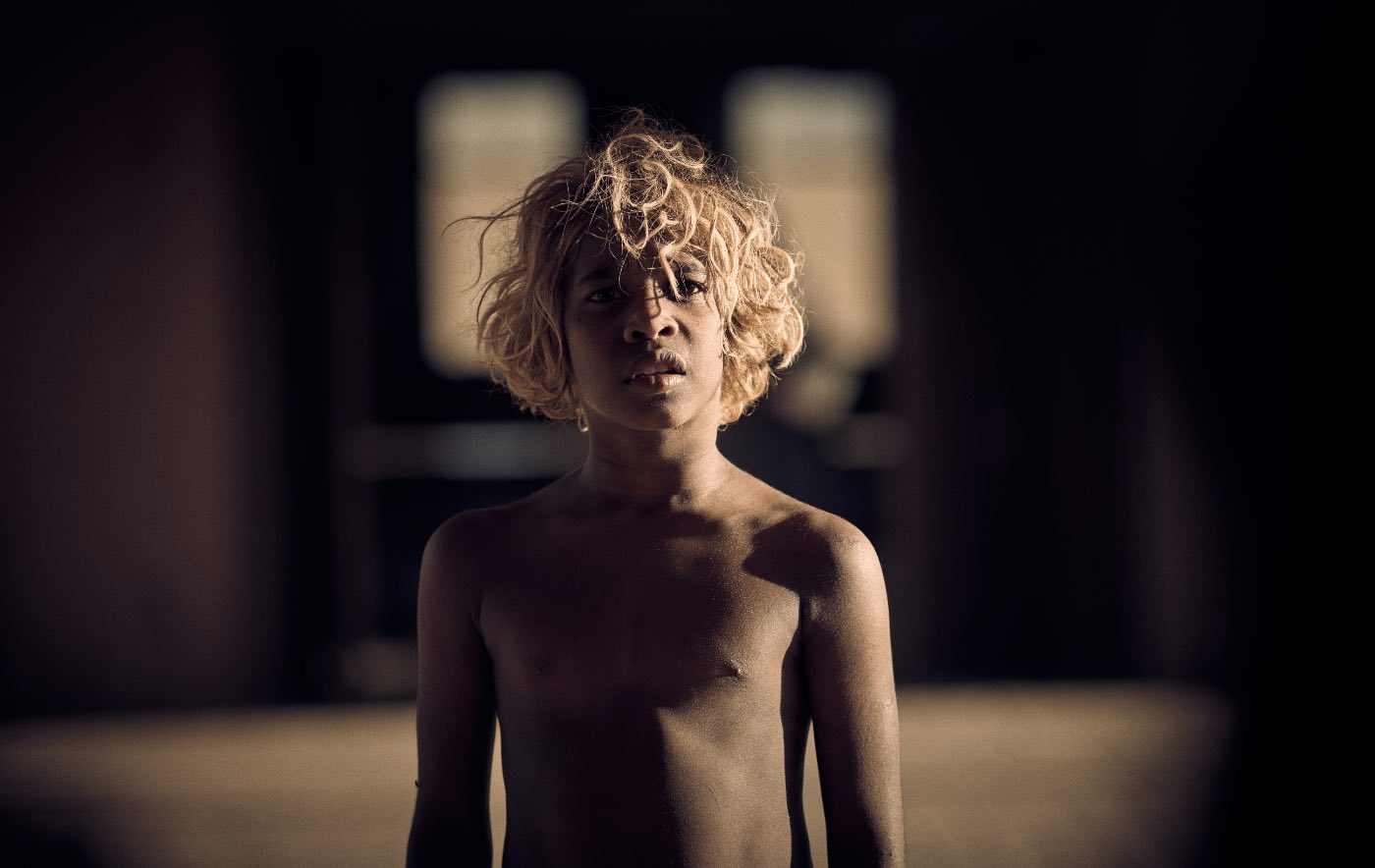
7R: Were you designing that with a thought of how you wanted to shoot it?
Warwick Thornton: Yeah, yeah, absolutely. In the morning, we would shoot outside. At 12 o’clock, when the light got really horrible — it’s incredibly harsh light in Australia — we’d go inside to the set we’d built. We put up 20 lights through the windows and the big dormitories, and we’d shoot inside. We’d come back out around three or four in the afternoon to do a couple of scenes when the light was beautiful again, on the back of the horizon. We didn’t have to change locations. It was all there. I could do whatever I wanted, which was fantastic.
Obviously, I could either have a dawn or a dusk. I couldn’t have both, because that would entail a lot of overtime for the crew and would become incredibly expensive. I don’t really like dawns. They’re a little bit too quick for me. It’s like, beautiful light, beautiful light, and then the sun pops up, and then it’s really hard, you know what I mean? And because of that, overnight, moisture has pushed all the dust down. It’s really, really cracking light.
So I always opt for sunsets, dusk. Because after 12 hours in daylight in Australia, the dust has risen. The light is much softer in the afternoon than it is at dawn. Any scene that entailed being at dawn, we’ll just shoot dusk for dawn. The light at the actual magic hour lasts a lot longer. It extends the ambience in the sky a lot longer.
7R: Is there a particular scene or sequence in The New Boy that you’re most proud of?
Warwick Thornton: As a cinematographer, I don’t buy lens flares; I make them. You know what I mean? The scenes where he’s got his little, not pet orb, but it’s like a comfort blanket, his little orb. The lens flares from that little orb are one of my favourite things. That was all written. It was all in the script. It was just like, “How do we do this?”
We tested a lot of diodes and LED lights, which were all incredibly painful. None of them gave us the right lens flares. And then Andy Robinson, who was the gaffer, pulled out an old peanut bulb, one of those ‘50s torches. It’s a classic light bulb in a torch. All torches now are LEDs. This was just this old peanut bulb that he found in the back of his truck. He wired it up to a converter, because it runs on 90V not 240V, which we have here. We were using vintage C series Panavision anamorphic lenses.
Suddenly, these incredibly beautiful lens flares appeared. Strangely enough, they only appeared on a very specific lens, a 100 mm macro lens called a Panavision MAP (Macro Anamorphic Prime). Suddenly, these incredibly beautiful lens flares appeared, creating rainbows. The orb burst to life.
The orb is on a stick with wires. My hands are in shot. The lead actor had never been in a film before. I wanted the light to dance on his face. So I’m holding the stick with this little peanut bulb on it. They just painted my hand out. That’s my kind of, I don’t know, claim to fame. I think that won me the Camerimage Golden Frog, that one lens flare.
7R: It was pretty incredible. I thought that can’t possibly be VFX, can it?
Warwick Thornton: It’s not. It’s all in camera. That’s kind of where I guess all cinematographers’ hearts are. If you can do it in camera, do it, you know?
7R: Tell me about the sound design in The New Boy.
Warwick Thornton: I make a lot of movies without scores. This one I’m doing now, Wolfram, is not going to have a score.
Liam Egan, a very dear friend of mine, did the sound design. He’s just incredible. We talked about sparseness. The wind was incredibly important. The creaking of the building. It’s an old building. These are foreign sounds, in a strange way, in that landscape.
And then on top of that, the warmth of Sister Eileen, with Cate Blanchett’s voice. We were working with that. Making her feel like she’s a good human being, just by re-pitching, re-toning the bottom end of her voice.
Warwick Thornton on the score for The New Boy by Nick Cave and Warren Ellis
Nick Cave and Warren Ellis did the score. Warren’s an old friend. Nick and I talk a bit, but we’re not really close friends. They got on board, and they were in London. They were just sending me stuff, all these amazing — they had a full orchestra, and they just created all this incredibly beautiful stuff. And then putting that in. I initially thought this would have quite a sparse soundtrack. But when Nick and Warren started sending me stuff, it was like, the film wants a big score. It’s telling me that it wants a really big score. The score just got bigger and bigger and bigger. It helped the film emotionally so much.
7R: As soon as you go outside with The New Boy, you start to really hear the sound of the wheat moving, the insects.
Warwick Thornton: I love all that. I love scores in films. Sometimes, it’s really cheap emotion. You know what? I mean, someone’s really sad, chuck a bloody cello in. It can be cheap and effective. It’s much harder to do that without the cello. You’re working with natural sounds. And I’m never one to shy away, in cinema, from hard things.
The world has a soundtrack already in real life. Where I am right now, it’s pitch dark. The sun hasn’t risen. In half an hour, I have to be on set. But right now, there’s a tap dripping, and there’s an air conditioner growling. That’s the soundtrack of the scene that I’m in right now. They’re important. You think of those things. What emotion can I get out of that bloody air conditioner humming away? What emotion can I get out of that dripping? The tap’s just going drip, drip, drip. There’s a rhythm happening with that tap, just dripping.
Building the soundscape of real life into a scene in The New Boy
If I were doing a scene right now, and you have this sort of rhythmic drip, and then it stops. Why did it stop? No one’s touched the tap, you know? Suddenly, you’re creating emotion just through sound. Or the air conditioner switches off, and you go, “Why did that switch off? I did not switch that off.” You can play with that.
There is a soundtrack happening already without a score. And I love thinking that way. Everything can be used, not just visuals. Everything can be used to create emotion or mystique, or whatever you need in your film.
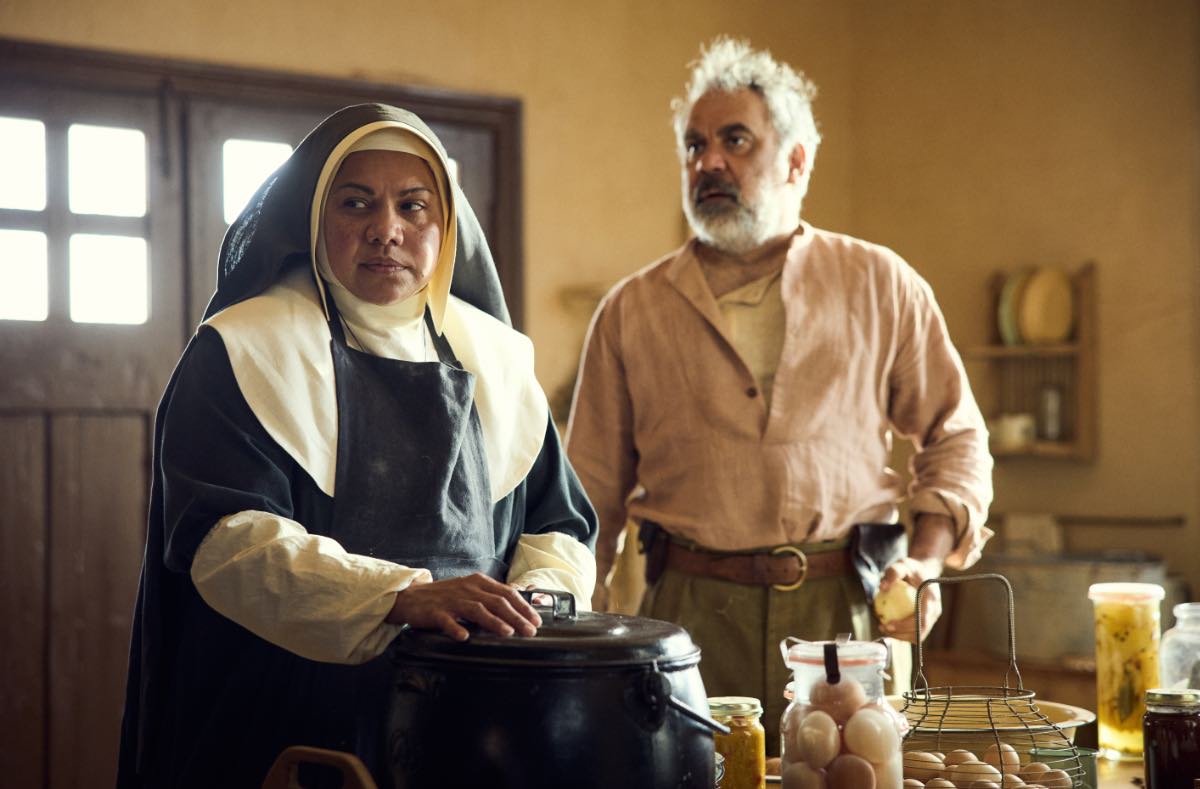
7R: Can you tell me a bit about your collaboration with Wayne Blair? You’ve shot a lot of his films that he’s directed. You guys work together on the TV series Mystery Road. And now, he’s an actor and in The New Boy.
Warwick Thornton: Wayne’s a beautiful old friend. The first time I worked with him, I shot a film for him called The Sapphires. We get on like a house on fire. I shot a film for him in Bulgaria called September Shiraz with Adrian Brody and Salma Hayek, which was good fun. We just have a good giggle when we’re on set, whether I cast him in a film, or he’s asked me to DP for him. We just had the best time. We have so much fun. So we’re friends first, filmmakers second, in a way.
7R: You were doing a lot of work in TV for a while (Mystery Road, The Beach, Firebite). How do you find working in TV vs. film?
Warwick Thornton: I used to be a bit of an elitist, but television became so damn good. You have much quicker access to the masses. It’s so empowering. I sort of rolled my eyes at Star Wars until Andor came along. It’s so incredibly brilliant, you know? So I used to be an elitist, and now I’m not.
I’d rather make my movies and for people to watch them in cinemas. But they’re all going to go to television, or to, sadly, an iPhone with a streamer. I don’t do much television. I try to focus on cinema.
I still love the thought of walking up to the front counter of a cinema and looking up and going, “Which film do I watch?” and buying a ticket. You sit in the cinema, and you give the film a chance. You know what I mean? “Well, I’m here now. I paid for this. I’m going to give this film a chance and get to the end.”
The trouble with streaming
When it’s sort of flicking through a tablet, there are 7000 films, and you paid for them all already. It’s kind of this weird disrespect: you kind of watch five minutes of a film and go, “I don’t want to watch that. That’s boring. Oh, I don’t want to go down that path, that storyline.”
I still love the cinema ticket. Television is brilliant when it works and empowering. But I still love cinema.
It’s less to do with the platform. It’s more to do with the screen, for me, the cinema screen. You can watch the same movie on your tablet, on your phone, or on your TV in your lounge room. But it’s the screen size that empowers me.
7R: Does that affect how you shoot, thinking about it for the cinema screen vs. people watching it at home?
Warwick Thornton: When you start thinking about, “Oh, they might watch it on their phone, so we need to have a closeup of…” I just don’t care. I know that what I’m composing — with that camera and that lens — is going to be on a 300-foot screen, a monster. I don’t need to pressure myself into getting a closeup because it happens in the wide shot. If it’s on that screen, you will see it. “You’ve got to get a shot of the scissors being picked up.” But they’re picking them up in the wide shot. They’re holding them. And if it’s on that screen, they’re going to see it. You know what I mean?
You’re composing for a different form of storytelling. If you were going to make something for an iPhone, you’d obviously get a shot of the scissors being picked up. Because if you just did a wide shot on the iPhone, you would never see the scissors in someone’s hand in a landscape, or whatever.
“I’m making this for the cinema screen” – Warwick Thornton on The New Boy
I don’t care about that. I go, “Right, I’m making this for the cinema screen.” That’s where it’s going to start. It’s not where it’s going to end, because obviously, your films are picked up by television or by streamers. It’s not where it’s going to end. But I’m shooting it for where it’s starting, not where it’s ending.
7R: Is there anything else you wanted to add that I should have asked?
Warwick Thornton: No, no, I’m happy. Awesome, awesome talk. I’ve actually got to be on set in 20 minutes.
7R: I’d better say goodbye! Thank you so much for taking the time to talk to me. I really appreciate it, and I’m excited that there’s going to be a Sweet Country sequel!
Warwick Thornton: Hopefully, you’ll see that at TIFF next year. They might hate it. It might be terrible and never get into anything, but that’s alright. That’s always a fear of your films.
Festivals are such a love-hate relationship, because you need them desperately. We don’t have the big P&A budgets, where we can spend a lot of money telling the world about our films. We need these amazing film festivals to get access to you and everyone, so you can tell the world about our films. Hopefully, it’ll be at TIFF. It won’t be ready until January/February next year.
Discover another amazing film by another Indigenous Australian writer-director-cinematographer
Discover one film you didn’t know you needed:
Not in the zeitgeist. Not pushed by streamers.
But still easy to find — and worth sitting with.
And a guide to help you do just that.

